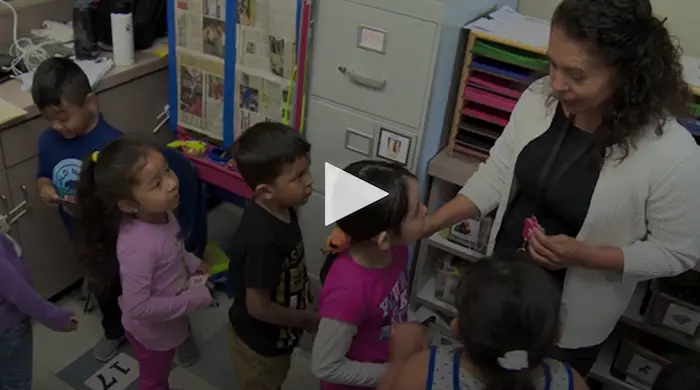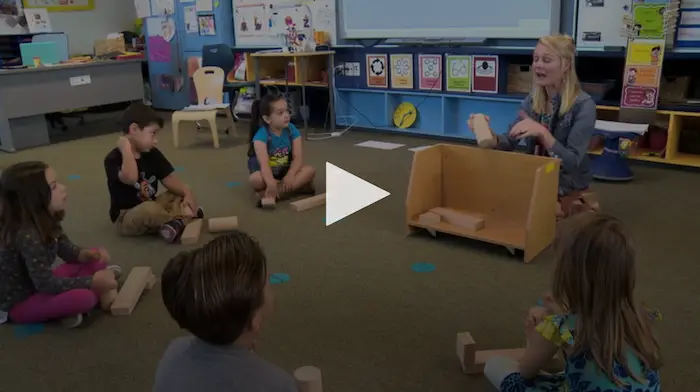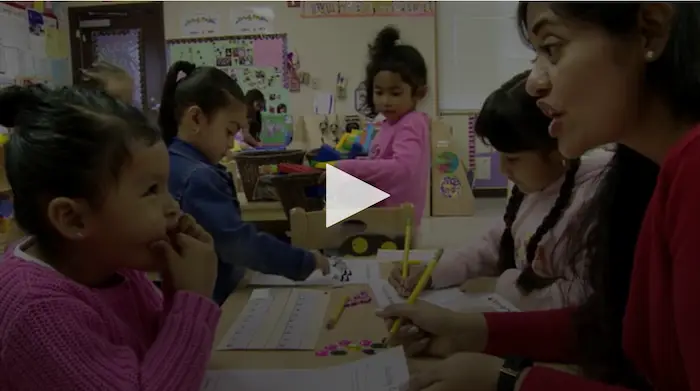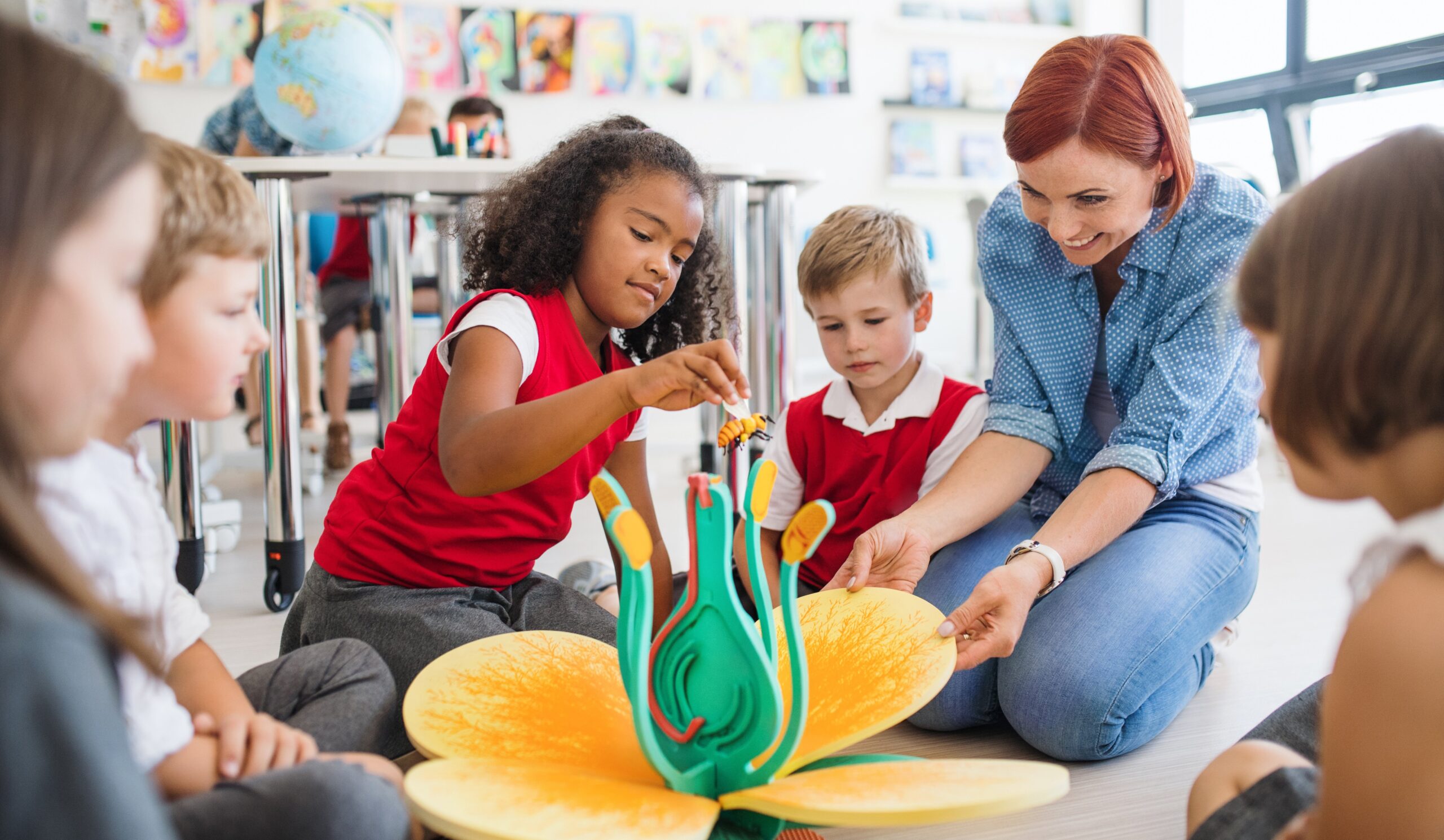Hour-long lessons? Asking students to work quietly at their desks? Not in early childhood!
Effective preschool teachers have perfected the art of infusing learning throughout their day so students can learn in continuous, small chunks while engaging in hands-on activities. Our latest video series, created in partnership with Development and Research in Early Math Education (DREME), features six engaging lessons that build on young children’s mathematical thinking. These videos do an amazing job at getting us to rethink what is possible in early childhood math.
While we were filming these lessons, we got a chance to capture six strategies that can be used to teach math throughout the day. These strategies get kids moving, connecting, and building understanding. As you watch, think about which strategies you would like to adapt for use in your classroom.
Infuse Math Into Transitions
All teachers have to teach their students how to transition smoothly from activity to activity. In this video, preschool teacher Dolores Torres engages her students in a numeral recognition activity before transitioning outside. Students get pieces of papers with numbers on them and have to find the matching numbers on the ground in order to go outside. By working together to find matching numbers, students engage in conversations about math and build number sense.

VIDEO: Line Up With Numbers
Another variation of this preschool-appropriate exit slip is seen in Natali Gaxiola’s classroom, where students count dots on a card and represent the number of dots using claps. Before they leave the classroom, Natali gives each student a card. Students either subitize, quickly saying how many dots are on the card, or they count the dots one-by-one. After determining how many dots are on the card, students represent the number using claps. This strategy can also be tweaked so that students represent numbers in different ways, such as jumps or steps.
Get Students Moving
We all know that young kids need to move around. Rather than fight against it, it makes more sense to plan lessons that integrate movement. In this video, Allyson Krogmann has students build shapes using blocks and verbal descriptions. By interacting with blocks, students are able to make kinesthetic connections as they build spatial relations skills.

VIDEO: Build & Describe
In the “Build and Describe” activity, one student gets to be the “lead builder” and build a structure using blocks that the other students can’t see. The lead builder describes the structure and the other students ask questions as they try to make their own versions of the structure. Finally, the structure is revealed and students get to see if they have made the same structure as the lead builder. This strategy is a great way to build both spatial reasoning skills and vocabulary.
In Miroslava Salmeron’s class, preschoolers use their bodies to compare sizes. Students are engaged in reasoning about length as they stand in front of the class and try to make a pattern of big/medium/small. By using students’ bodies instead of manipulatives, students get a chance to move and engage with mathematical concepts firsthand.
Make Connections
No matter what age or subject areas we teach, it’s important to make connections with students. In this video, preschool teacher Kathy Conrow involves students in giving feedback on their work. She asks her students what they would like to say about their work, then writes the ideas on their papers. This encourages students to reflect on their learning, take ownership of their work, and celebrate their successes. This strategy can be a great way to make connections with families by sending home work that students are ready to share and talk about.

VIDEO: Celebrating Accomplishments
Not only is it meaningful to make connections with students, it’s also helpful to make connections between what we teach. In this video, preschool teacher Crystal Surita engages students in learning about counting through a read aloud and hands-on activity. As she reads Pete the Cat, Crystal asks students to answer several counting questions. After reading, students practice counting groups of buttons.
Which of these strategies could you implement in your classroom?







